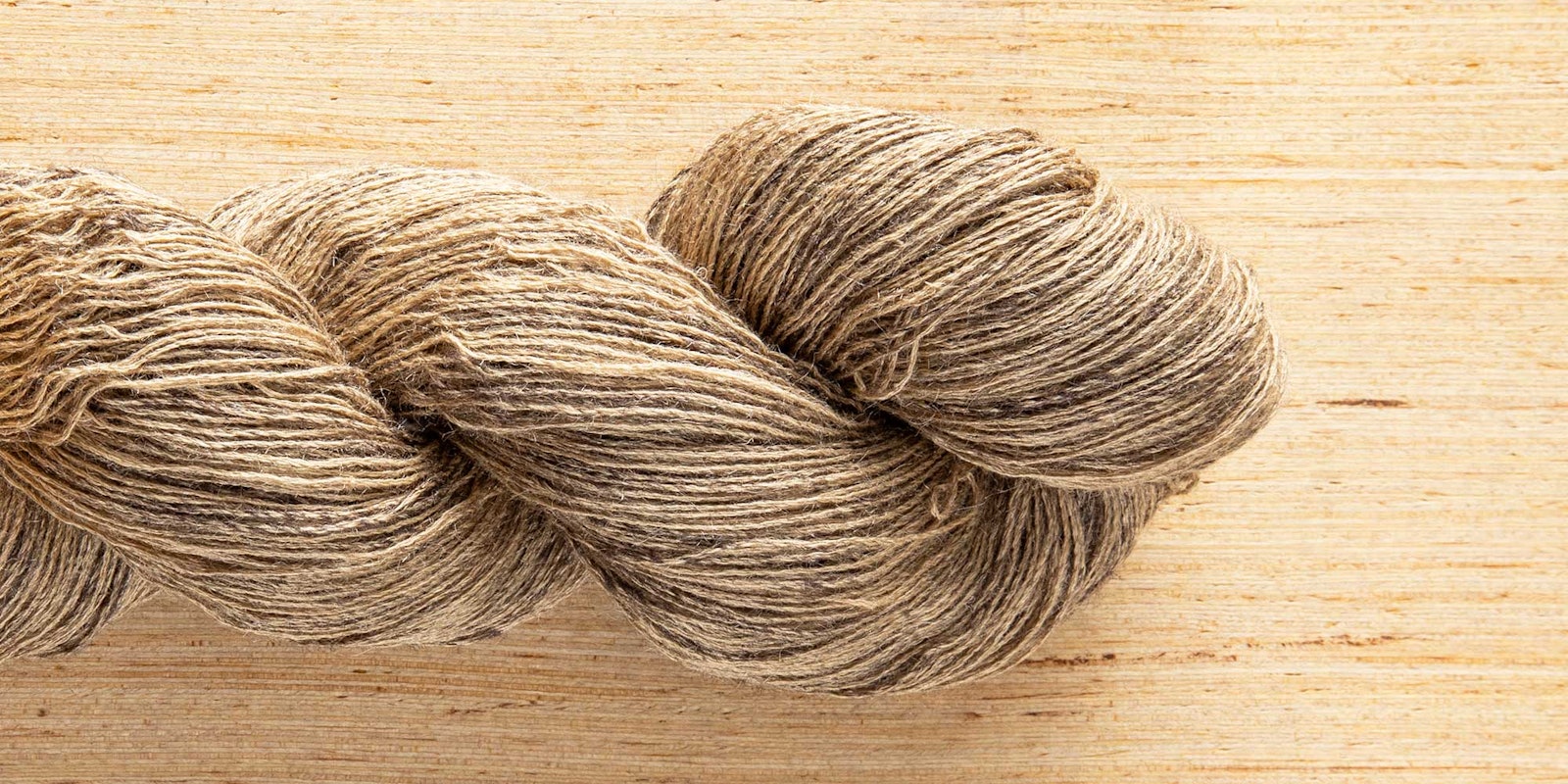Susan Du Bois and Richard Yabunaka are the owners of Treenway Silks, a silk company long loved by fiber artists. Silk is a fiber beloved for its incredible drape and shine, but it also creates fabrics that are both cooling and insulating—like many wools. If you haven’t considered silk for knitting, now might be the time! Wild Tasar Millspun is one of Treenway Silks’ many options for silk yarn, and is featured in the upcoming print issue of Farm & Fiber Knits. I was so intrigued by this golden laceweight, and I sat down with Susan to learn more.
Farm & Fiber Knits: When I first saw the yarn featured in the upcoming print issue of Farm & Fiber Knits, I was amazed at how beautiful and rich the colors are. Can you tell me a little bit about this yarn in particular?
Susan Du Bois: This millspun yarn, Wild Tasar, is one of my favorites. The color is phenomenal and the yarn is laceweight, making it very versatile.
The wild tasar silkworm is related to the Chinese Oak tussah silkworm—you can think of them as cousins. While they eat different foods, both varieties eat leaves containing tannins, which gives the silk its color. Wild tasar silkworms are reared deep in the forest in the Bastar tribal region. The tribal people watch over the silkworms to protect them from predators.
These cocoons are “hard.” If you compare the wild tasar silk cocoons to bombyx, Chinese Oak Tussah, Muga, or Eri silk cocoons, you’ll feel the difference. The wild tasar cocoons also have subtle differences in color. It can be difficult for the untrained eye to sort the colors. I believe it’s these differences that give our millspun Wild Tasar the mixture of colors that can only be found in nature. You couldn’t dye silk and get the same effect. This yarn gets softer and a bit brighter after just one washing.
FFK: What kinds of projects do you see knitters making with this yarn?
SDB: Our millspun wild silks are all laceweight or even a bit finer grist. Each is perfectly suited for anything lace—scarves, shawls, shawlettes, or even a lacy top.
However, if laceweight is a finer grist than what you typically use, you can always double up the yarns. Silk has such lovely drape that you’ll still have a lovely hand when using multiple strands together. You can also double it with another natural fiber yarn, such as wool. Of course, you should knit a swatch and see how the two fibers play together when wet-finishing!
FFK: Could you tell our readers a little bit about Treenway Silks’ history and how you came to be a part of it?
SDB: Treenway Silks was founded in 1977 in Canada by Karen Selk and Terry Nelson. After 34 years, they were ready to begin their “third chapter” of life and were looking for a buyer. In August 2011, my husband Richard Yabunaka and I felt fortunate to be their pick as the new owners and carry on the legacy of Treenway Silks.
We relocated the business to Lakewood, Colorado, where we live. We now live the “Treenway Silks” lifestyle—another way of saying Treenway Silks is with us 24/7. And we wouldn’t have it any other way!
 Susan Du Bois and Richard Yabunaka. Photo courtesty Treenway Silks
Susan Du Bois and Richard Yabunaka. Photo courtesty Treenway Silks
FFK: What makes Treenway and the yarns you offer so unique?
SDB: Treenway Silks’ connection to wild silks from India began with Karen Selk. After she visited the first time, the call of wild silks was in her blood. She and Terry made nearly a dozen trips over the years. The culmination of these journeys is Karen Selk’s ground-breaking book, In Search of Wild Silks: Exploring a Village Industry in the Jungles of India, published in 2024.
Treenway Silks has worked with Hansraj, the same silk merchant in India, for over 20 years. Hansraj has developed a network of local villagers practicing sericulture. Rearing wild silk is an important part of their family’s income, and is often performed by women.
We have been able to secure wild silk cocoons with the pupa removed from four different types of wild silkworms.
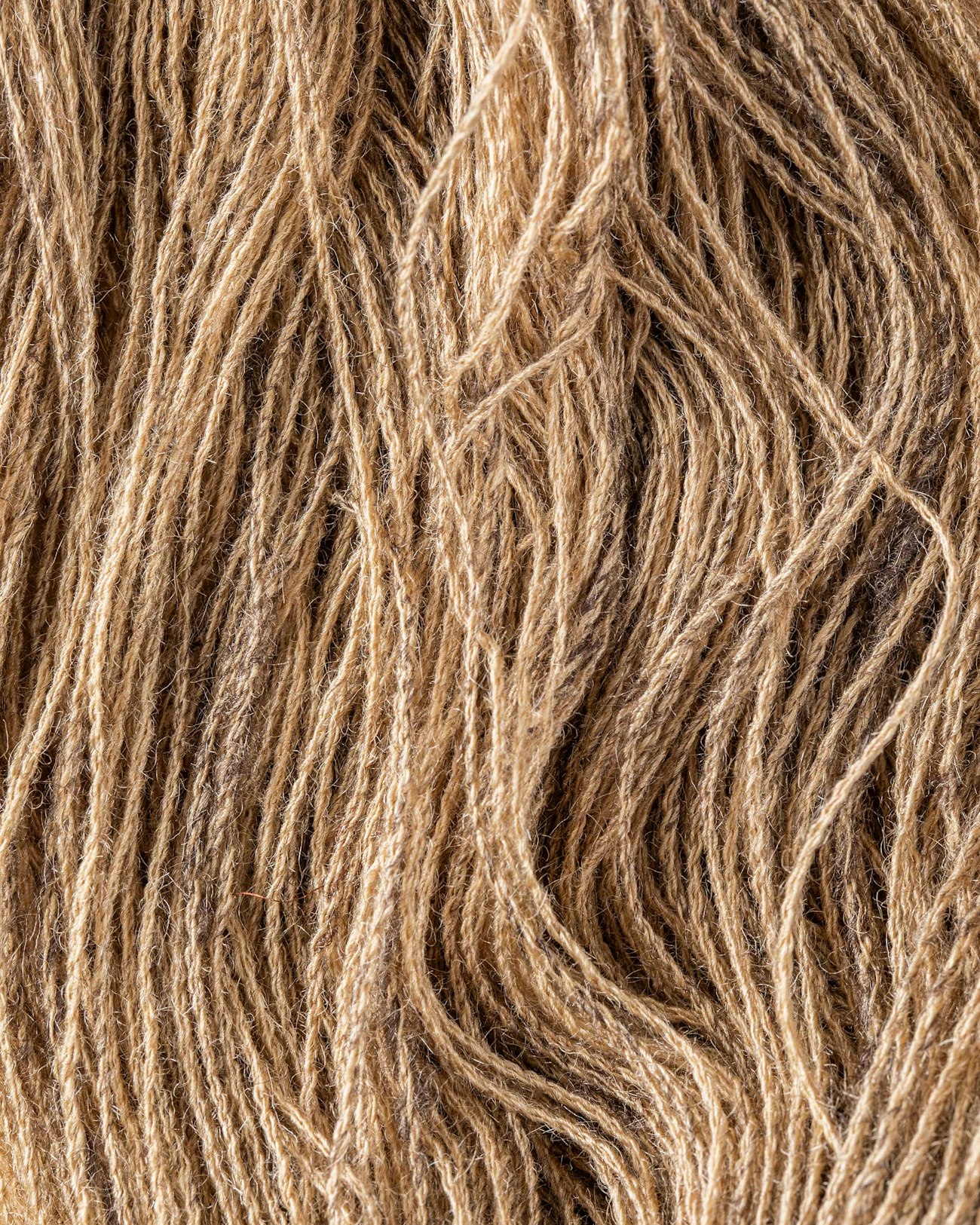 Treenway Silks has a wide varitety of wild silks to choose from, including this wild tasar silk.
Treenway Silks has a wide varitety of wild silks to choose from, including this wild tasar silk.
FFK: Can you tell me a little bit about the different types of wild silks you offer and what makes them so special?
SDB: Hansraj also has network of local artisans who handspin various silk yarns. Of particular note are Shanti, an eri silk handspun on a takhli spindle by local villagers; Takhli Tasar, a wild tasar silk spun on a takhli spindle by local villagers; and Ghicha, a wild tasar silk that is “pulled” by local villagers in a process similar to reeling. Often the spinner is multitasking or even walking, so perfection is not the goal, and these wild silks have a distinctly handcrafted feel, and will have some dirty water the first time you wash them.
If you love wild silks, but prefer a more refined yarn, then our millspun wild silks are perfectly suited for you.
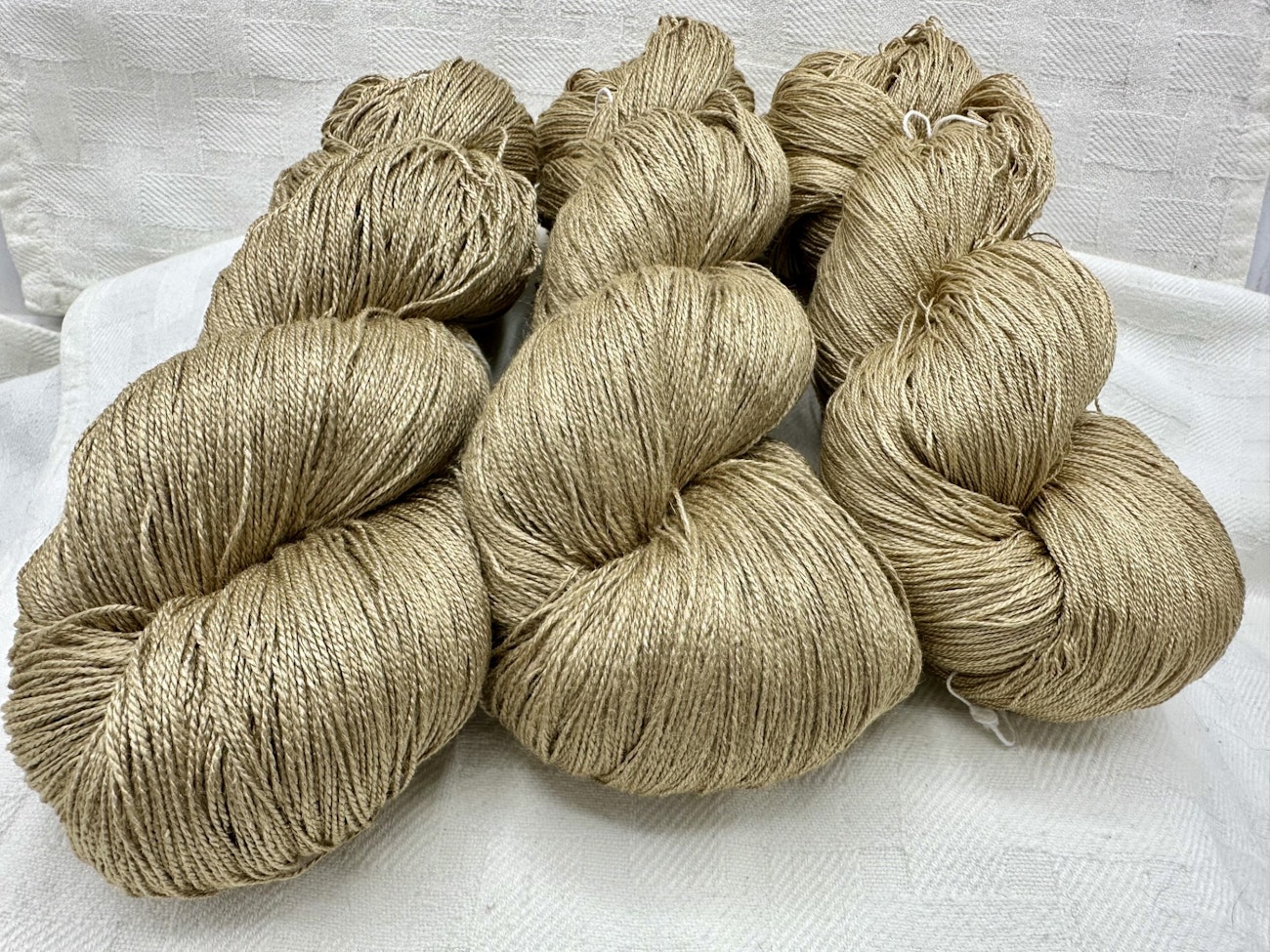 Treenway Silks’ three muga silk yarns From left: Carmela, Caramel, and Carmelina. Photo courtesy Treenway Silks
Treenway Silks’ three muga silk yarns From left: Carmela, Caramel, and Carmelina. Photo courtesy Treenway Silks
Muga silk yarns are perennial favorites. Muga silk is naturally a rich honey color. Muga silkworms are reared in forests. Muga silk is organic, as no pesticides are used. The climate for these special silkworms is limited to a small region in northeast India, the Assam state. Unfortunately, rising world temperatures have a very negative impact on these silkworms, reducing the viable silkworm cocoon crops. The Silk Board of India is attempting to relocate some muga silkworms to another region. While that might sound simple, in addition to finding the right climate and vegetation, these new areas lack generations of sericulture tradition. This photo of Muga silk skeins includes Carmela, Caramel, and Carmelina.
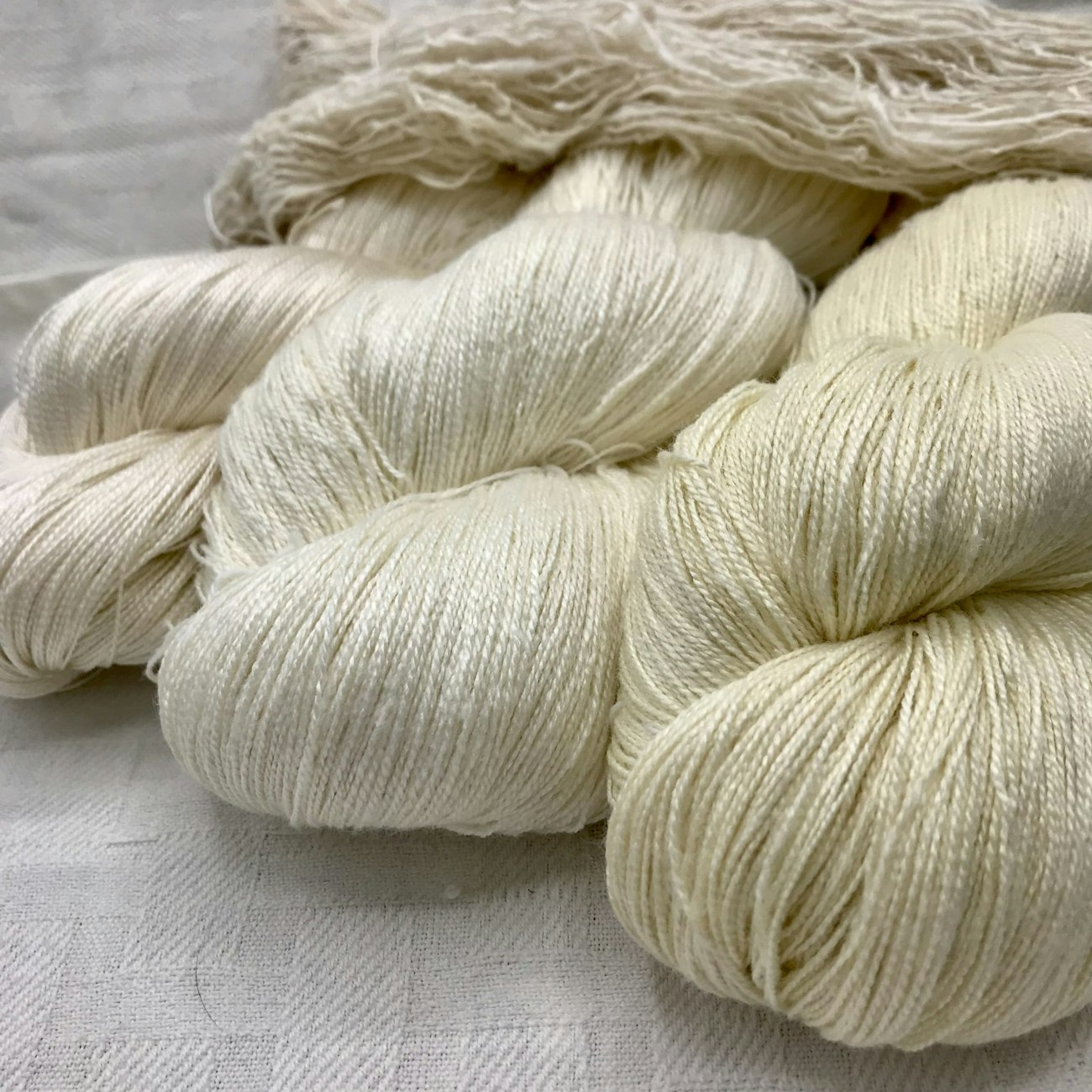 Some of Treenway Silks’ many yarns. Top: Shanta is handspun eri silk made on a takhli by villagers in India. From left: Kiku, a Bombyx silk yarn; OmShanti, eri silk shown in both white and red. Photo courtesy Treenway Silks
Some of Treenway Silks’ many yarns. Top: Shanta is handspun eri silk made on a takhli by villagers in India. From left: Kiku, a Bombyx silk yarn; OmShanti, eri silk shown in both white and red. Photo courtesy Treenway Silks
OmShanti, eri silk from both the white and red eri silkworms, is lovely. This silk has a distinctly different look than the traditional Bombyx mori (mulberry) silk. Eri silk has an internal sheen. When you first look at it, you don’t see the shine that you expect from Bombyx silk—it’s matte in comparison, like mercerized cotton. But as I handle Omshanti, particularly when dyed, I feel it glows from the inside.
If eri silk looks similar to cotton, what’s the point? Eri’s protein fiber is more durable than cotton’s cellulose fiber. Eri silk has a silky touch, is easier to dry than cotton and has more elasticity—meaning fewer wrinkles!
Fabrics that are cooling wick away moisture, allowing it to evaporate quickly. Silk is known to have both insulating and cooling qualities. While I haven’t found scientific proof that eri silk absorbs more moisture than bombyx silk, it feels as though it does. Having dyed and rinsed thousands of skeins of bombyx silk, I know the feel of five wet skeins in my hands. When I rinse Omshanti, those five skeins feel noticeably heavier. I believe eri absorbs more moisture, making it even more suitable to wear in hot climates. One last benefit of eri silk—if you’ve ever been frustrated with silk and static electricity, that won’t be an issue with eri silk.
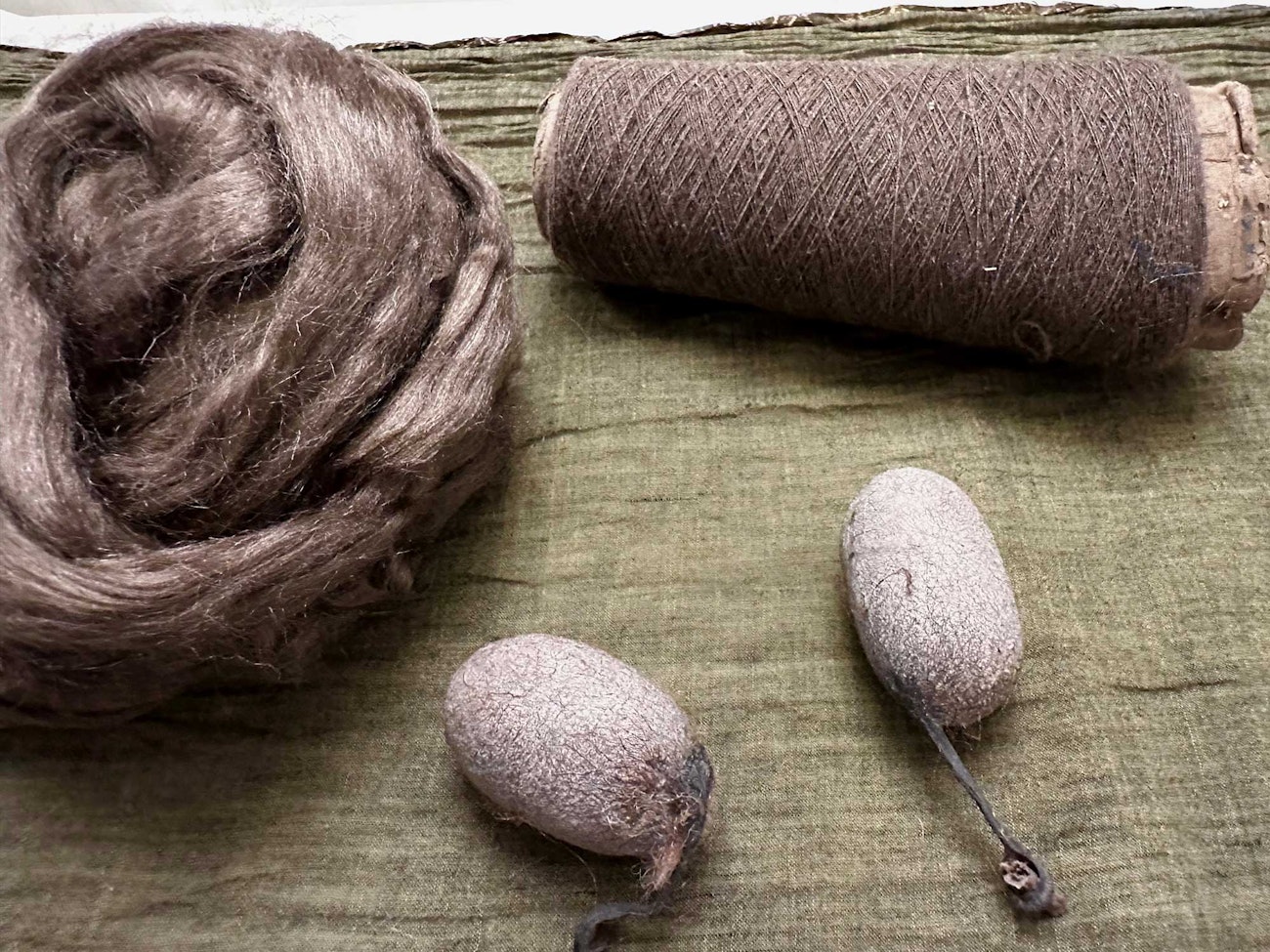 Peduncle silk roving (Left), yarn (Top), and peduncles with silk coccoons attached (Bottom). Photo from About Silk with Karen Selk Long Thread Media video series
Peduncle silk roving (Left), yarn (Top), and peduncles with silk coccoons attached (Bottom). Photo from About Silk with Karen Selk Long Thread Media video series
Kinetta, peduncle silk, is made from the “peduncle” or “connecting stem” that the tropical wild tasar silkworm creates. These wild silkworms are reared in the deep forest, on large native trees, with Terminalia arjuna and T. tomentosa giving the highest quality tasar silk. When the silkworm is ready to spin its cocoon, it first spins a little connecting “stem” to securely attach itself to the tree. Then it spins the cocoon.
When collecting the cocoons, the peduncle often stays attached to the tree. But the peduncles that are gathered can be made into usable, short-staple fiber that can be spun. It’s a lengthy process, one that Karen Selk has written about for us. The short version is “boil it, beat it, card it”, then repeat the carding multiple times. This yarn has lots of twist energy—it will shrink when washed. The samples we’ve made have paired Kinetta with other silk yarn—after wet finishing, the cloth has a very sturdy feel.
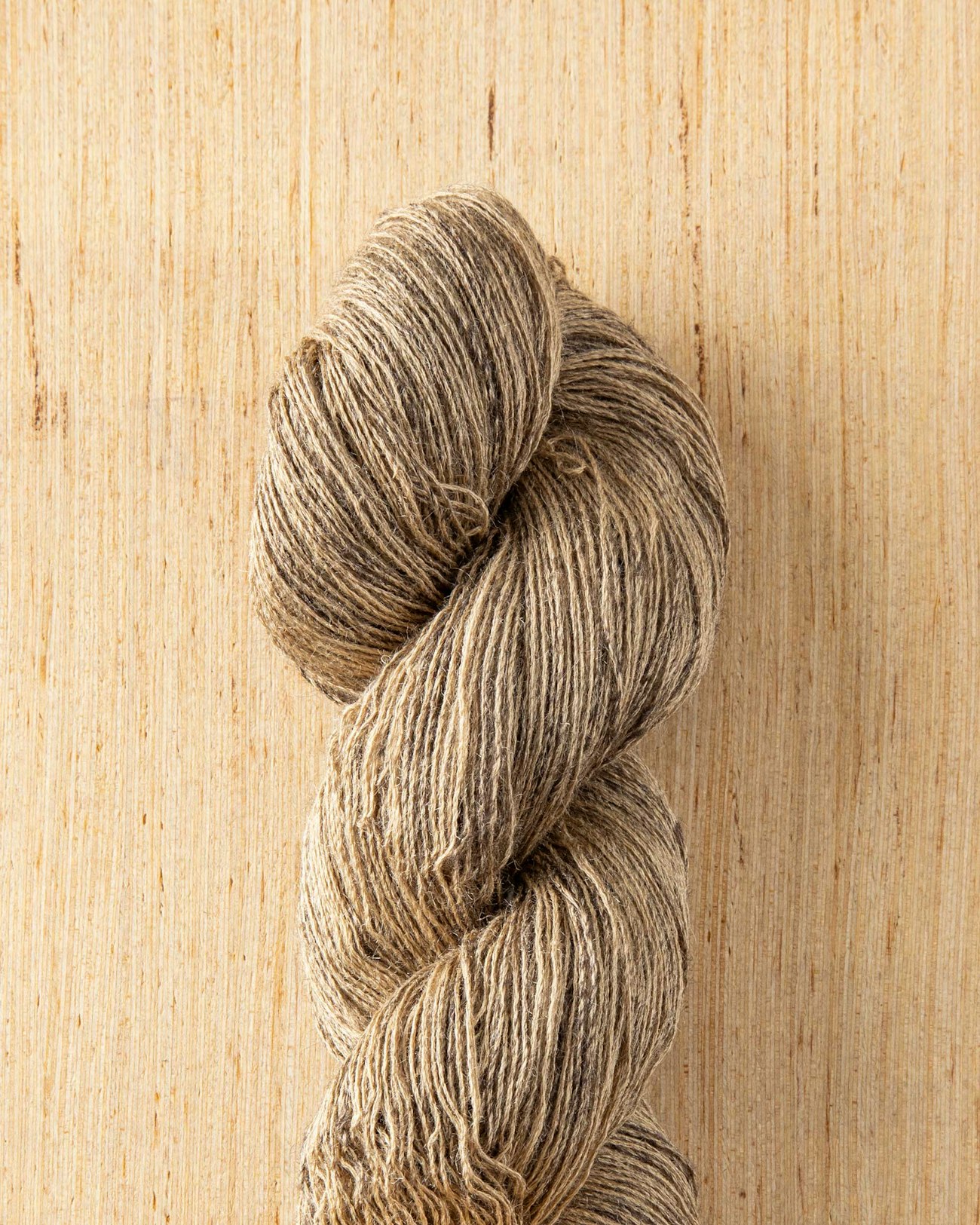 Treenway Silks’ Wild Tasar Silk is featured in the upcoming print issue of
Treenway Silks’ Wild Tasar Silk is featured in the upcoming print issue of
Farm & Fiber Knits.
Find Treenway Silks on Facebook as TreenwaySilks and on Instagram as treenwaysilks, or shop online at treenwaysilks.com, where you can also discover many more articles about silk.
Resources
- Subscribers can see many of thse silks and learn more about them in Karen Selk’s five-part mini-series, About Silk with Karen Selk.
- Be sure to subscribe to reserve your copy of the new Farm & Fiber Knits issue and get the digital copy the day it comes out!

